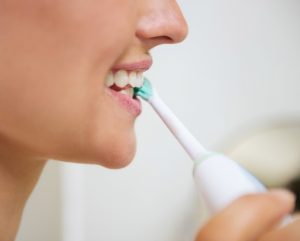 Over time, teeth can turn from white to yellow and other colors. Luckily, this disappointing transformation can be reversed. Ordinary people seeking a fresh start with bright white teeth can have beautiful smiles once again, through teeth whitening procedures at the dentist’s office. This FAQ page discusses the details of tooth whitening so that patients who want to have a white smile again can get what they want.
Over time, teeth can turn from white to yellow and other colors. Luckily, this disappointing transformation can be reversed. Ordinary people seeking a fresh start with bright white teeth can have beautiful smiles once again, through teeth whitening procedures at the dentist’s office. This FAQ page discusses the details of tooth whitening so that patients who want to have a white smile again can get what they want.
What Causes Teeth to Become Stained?
Teeth stain naturally with time. Consumption habits, dental hygiene habits, and also lifestyle choices can all affect how badly the teeth become stained. Acidic foods and beverages that are dark in color (like coffee and red wine) tend to stain teeth very badly because the acids in the drinks enable the pigments to be absorbed easily into the teeth.
People who see the dentist regularly are more likely to have clean, unstained teeth. In addition, smoking habits can have a big effect on the appearance of a person’s teeth.
What Does the Dentist Do to Whiten Teeth?
When a patient comes in to get their teeth whitened, the dentist will use concentrated whitening agents to whiten the teeth much more quickly than is possible at home. Whitening takes place in a short series of visits to the dentist’s office. You may see results from the first visit.
How Often Should the Dentist Re-Whiten Teeth?
In-office bleaching can be repeated annually. If you want to maintain white teeth between bleachings, you must make changes to your habits to prevent your teeth from becoming stained again.
Are There Natural Ways to Prevent Teeth From Becoming Stained?
People can prevent their teeth from becoming stained using a variety of methods. For many adults, prevention may involve some lifestyle changes and habit changes.
For example, nicotine and tar are known to stain teeth even after smoking for only a short period of time. People who are smokers for years may find their teeth turning dark yellow or even brown. For a smoker, one of the best things that he or she could do to stop teeth from becoming brown is to stop smoking.
People who drink staining beverages like coffee and soda can protect their teeth from stains by drinking out of a straw. Straws help the drink bypass the front teeth (although the molars may still get some stains), thus preventing stains.
This method works for red wine as well, although many people feel self-conscious drinking red wine out of a straw. A good way around this problem is to mix red wine with juices and sparkling water. Red wine drinkers can experiment with different combinations of juices and wine to create a beverage that can easily be drunk from a straw.
Practicing good dental hygiene is also important if you want to maintain white teeth. Brushing regularly, flossing daily, and using mouthwash can all help prevent teeth stains.
Eating certain crunchy and fibrous foods can also help you maintain white teeth. Foods like celery, apples, pears, and carrots can remove bacteria from the teeth and promote white enamel.
Does Tooth Whitening Hurt?
Tooth whitening can cause tooth sensitivity. This sensitivity is generally temporary, lasting through the bleaching process and ending shortly after the teeth are whitened. You can avoid problems by whitening your teeth no more frequently than what is recommended by their dentist. Ibuprofen can reduce pain while the nerves go back to their original state.
Can Tooth Whitening Damage Your Nerves?
Tooth whitening should not damage the nerves. The sensitivity that people experience after tooth whitening is the nerve’s reaction to the tooth whitening. After a short time, the nerves return to the way they were, and there should be no permanent damage. However, a patient who experiences tooth sensitivity for several days after their tooth whitening session should contact the dentist for assistance.
Do Any At-Home Tooth-Whitening Systems Work?
You can try a variety of at-home tooth whitening products. Some of these systems work better than others. For example, tooth-whitening toothpaste is said to whiten teeth and remove surface stains only. Tooth-whitening toothpaste will not lighten teeth to a shade that is lighter than the natural color of the tooth, nor will tooth-whitening toothpaste remove stains that are deeper than the surface of the teeth.
Another system that some people use at home to whiten their teeth involves hydrogen peroxide and baking soda. These two ingredients are combined into a thick paste, and then the resulting paste is used to brush the teeth. Do this three to five days in a row. You can repeat this procedure every six months.
Where Can You Find Out More About Tooth Whitening?
Patients who want to know more about tooth whitening can contact a reputable dentist in their area for more information. At Silverado Family Dental, we’re happy to answer patient questions about tooth whitening. To find out more about this procedure and other dental procedures, contact us today.
